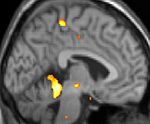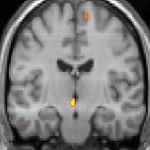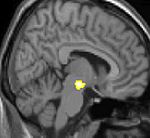Cluster headache facts for kids
Quick facts for kids Cluster headache |
|
|---|---|

Trigeminal nerve
|
|
| Classification and external resources | |
| Specialty | Neurology |
| ICD-10 | G44.0 |
| ICD-9-CM | 339.00,339.01,339.02, |
| DiseasesDB | 2850 |
| MedlinePlus | 000786 |
| eMedicine | EMERG/229 article/1142459 |
| Patient UK | Cluster headache |
| MeSH | D003027 |
Cluster headache (CH) is a neurological disorder characterized by recurrent, severe headaches on one side of the head, typically around the eye. There are often accompanying symptoms during the headache such as eye watering, nasal congestion and swelling around the eye, typically confined to the side of the head with the pain.
Cluster headache is named after the demonstrated grouping of headache attacks occurring together (cluster). Individuals typically experience repeated attacks of excruciatingly severe headache pain. Cluster headache attacks often occur periodically. The cause of cluster headache has not been identified.
While there is no known cure, cluster headaches can sometimes be prevented and acute attacks treated. The condition affects approximately 0.2% of the general population and men are more commonly affected than women.
Signs and symptoms
Cluster headaches are recurring bouts of excruciating headache attacks of extreme intensity. The duration of a typical CH attack ranges from about 15 to 180 minutes. Most untreated attacks (about 75%) last less than 60 minutes. The onset of an attack is rapid and most often without preliminary signs that are characteristic in migraine.
Pain
The pain occurs only on one side of the head (unilateral), around the eye (orbital), particularly above the eye (supraorbital), in the temple (temporal), or in any combination. The pain of CH attack is remarkably greater than in other headache conditions, including severe migraine. The pain is typically described as burning, stabbing, boring or squeezing, and may be located near or behind the eye. It is reported as one of the most painful conditions.
| Positron emission tomography (PET) shows brain areas being activated during pain | ||
| Voxel-based morphometry (VBM) shows brain area structural differences | ||
See also
 In Spanish: Cefalea en racimos para niños
In Spanish: Cefalea en racimos para niños







